Today's Saturday • 15 mins read
- Over 22 million people in the USA have anger issues.
- 65% of people in the UK express anger over the phone, 26% in writing, and 9% in face-to-face interaction.
Mostly, our negative emotions arrive in a group, not alone.
Sadness comes with hopelessness and helplessness, anger with frustration and resentment, and loneliness with anxiety and worthlessness.
Each negative emotion brings its own hurt. But ignoring, suppressing, or avoiding them can hurt us more in the long run.
For example, suppressing anger may cause high blood pressure and heart issues. Suppressing sadness can lead to depression. Suppressed emotions may eventually erupt in unexpected ways, like emotional outbursts.
The healthy way to cope with negative emotions is to embrace them in a positive way.
First, check if you have an unhealthy relationship with your emotions:
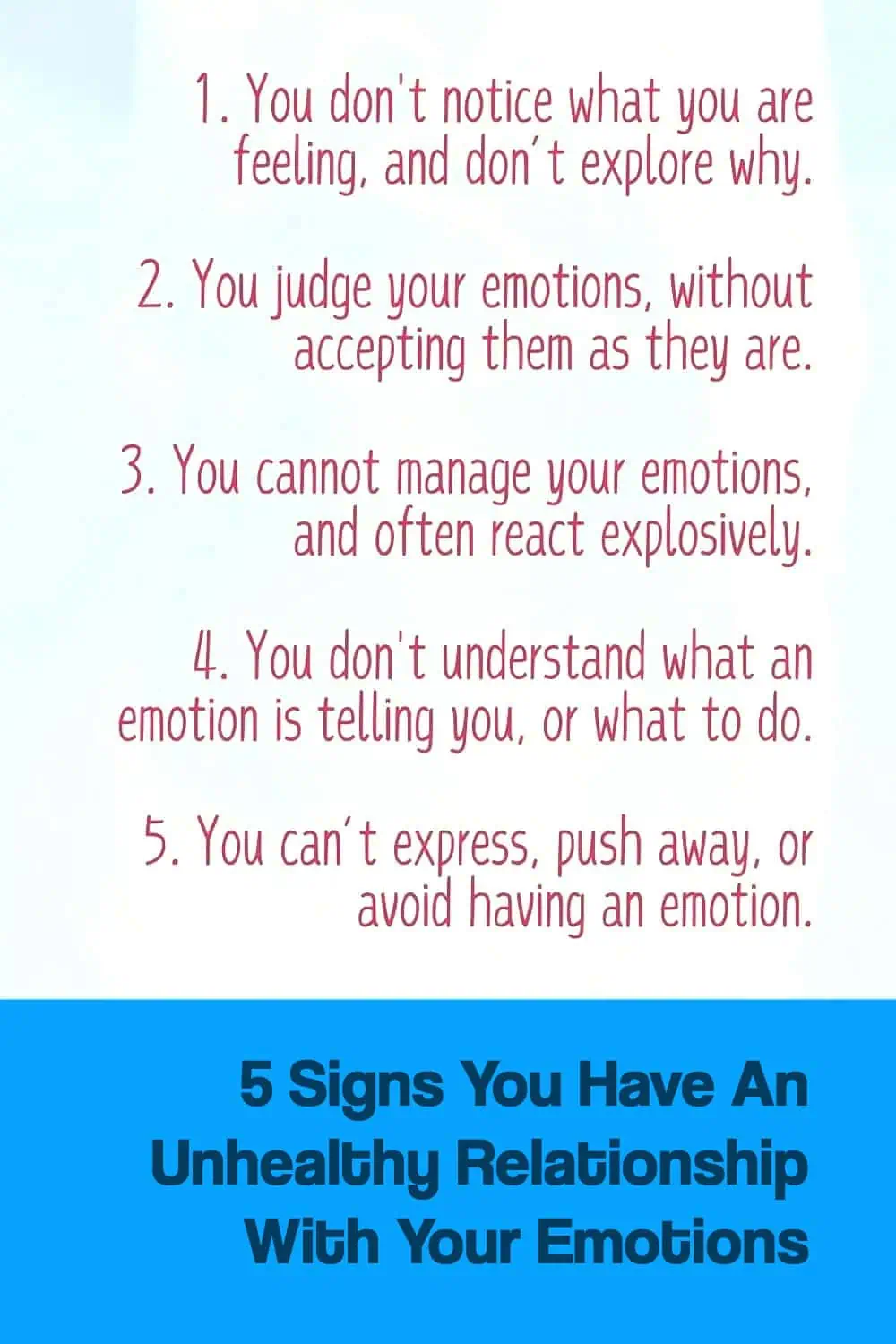
How To Embrace Your Negative Emotions
Negative emotions are not inherently bad — they are just pointing to something bad happening inside or outside.
Here are 7 ways to embrace your negative emotions:
Step 1. Be aware of the rising negative emotions.
Noticing a negative emotion early is like spotting a distant storm and taking safety measures before it arrives.
- Physical awareness: Do you feel a tightening in your chest, a knot in your stomach, or a rush of heat to your face? Notice the physical cues when a negative emotion starts. Observe these bodily sensations without judgment. Give yourself permission to feel what your body alerts you to, without dismissing or criticizing the experience.
- Emotional origins: “What triggered me to have this emotion: something that someone said, a certain situation, or a memory?” Explore to understand the roots of that negative emotion. Identifying your triggers can help you prepare for and manage similar situations in the future.
- Labeling the negative emotion: Ask yourself, “What am I experiencing right now?” Then answer it as “I am feeling anger,” not “I am angry.” Or, “I am feeling sadness,” not “I am sad.” This shift in language tells your mind, “I am not defined by this negative emotion. This is not a permanent state. I am only having a temporary experience of this emotion that will pass.” Naming the emotion lets you accept its presence without letting it overwhelm you.
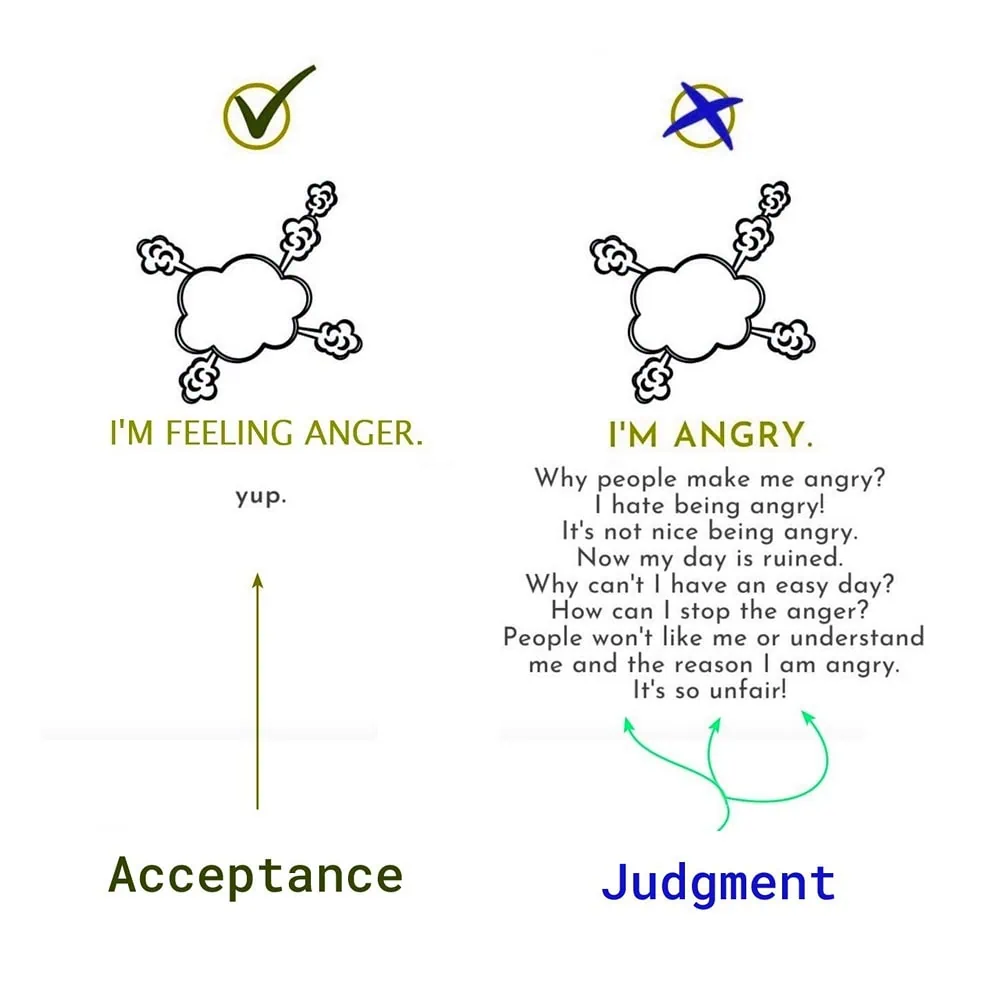
Step 2: Grasp and act on the message in your emotion.
Each negative emotion carries a message, whether triggered by trauma, stress, abuse, family situations, lack of money, or the loss of a close one.
- Grasp the message: Every emotion carries a message — grasp it. Fear might be telling you to be cautious. Anger might be signaling a boundary violation. Sadness might be a sign of a loss or disappointment. See your negative emotions as informative messages, not threats.
- Act (or don’t act) with reason: This is a bigger truth: Every emotion need not be acted upon. You might feel angry, but you don’t have to act violently. You may feel the fear and may still do what you want to do with courage. The way you respond is always up to you. Use your rational mind to make that choice.
- Let go of your emotion: Once an emotion has delivered its message, and you have responded with wisdom, you can let it go. You are forcing the emotion away. You understand its short-lived nature, so you allow it to fade and recede naturally, just like a wave in the ocean.
“Emotions appear as fleeting states that grab one of our fingers and point it to the event causing it.”
Step 3: Reframe your negative narratives with alternate stories.
The idea behind this is a fact: Our minds are not always telling us the truth.
- Reframing Technique: Therapists use “reframing” to change how we think and feel. They give you a thought-provoking exercise to think about the relationship between a desk and a chair. Is the desk the “mother” of the chair? You might say that the desk is a source of support or stability, like a mother. Or, that the chair relies on the desk for its function, like a child.
- Power of Stories: Your mind created a story to explain a human-like relationship between two non-living objects. Why? Because your mind is constantly trying to make sense of the world by weaving events into stories. These stories are based on your best guesses, but they often feel like facts. Then they influence your emotions and behavior and, ultimately, shape your reality.
- Challenging Narratives: Challenge your mind’s negative stories, and try to find alternative narratives. Question your initial assumption. Force yourself to consider other causes. What else might be the reason? Was it a skill gap, external factors, or growth opportunity that made you make that story? Ask yourself, “How can this experience help me grow stronger or wiser?” This can change the way you see things. Then on, you can create empowering stories that help your personal evolution.

Step 4. Practice self-compassion and acceptance.
- Treat yourself with kindness: When negative emotions arise, treat yourself as you would do a dear friend in a difficult situation. Offer yourself words of comfort and empathy. Tell yourself that having difficult emotions is a universal human experience.
- Mindful acceptance: Let your negative emotions be, without trying to push them away or change them immediately. Accept their existence. Allow yourself to feel them fully. As psychologist Carl Rogers said, “The curious paradox is that when I accept myself just as I am, then I can change.” Tell yourself, “I accept my negative emotions as valid messengers. Now that they are here, I can simply allow them to be present without worrying about them, trying to hide myself, or throwing them out.”
- Feel fully without judgment: Experience the negative emotion in its entirety. Don’t get carried away, don’t judge yourself, and don’t resist the emotional wash-over. If you suddenly get an unexpected rush of embarrassment about a past mistake, let it go over you fully. Don’t try to push it away and replace it with a positive emotion. Feeling our emotions fully gives them a chance to deliver their message and then naturally dissipate.
- Recognize common humanity: Remind yourself that you’re not alone in your struggles — countless others have felt similar emotions. It helps you feel less isolated and less self-judging. It tells you that you, just as any other human, are entitled to experience the full emotional spectrum.
- Self-soothing techniques: You could practice some self-soothing activities when negative emotions are intense. Try placing a hand over your heart, taking slow deep breaths, or giving yourself a gentle hug. These physical gestures can activate your body’s caregiving response, helping calm your nervous system.
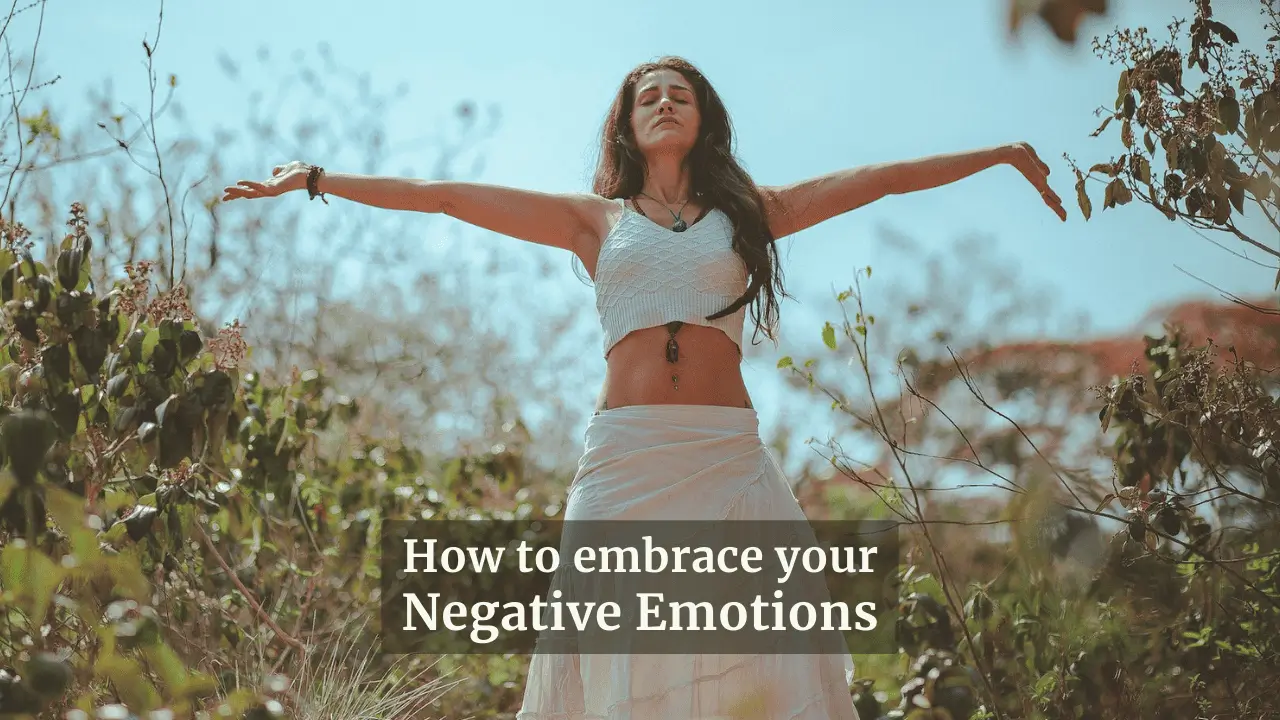
The Stoics have a phrase for acceptance — amor fati.
- Amor fati is acceptance, not resignation to fate.
- It is coming to terms with reality and then taking action for the next goal.
- It is to accept a result as it is, without wishing or revolting that it should have been different.
“Don’t seek for everything to happen as you wish it would, but rather wish that everything happens as it actually will—then your life will flow well.”
— Marcus Aurelius, The Philosopher King
Step 5. Express your negative emotions in healthy ways.
- Find appropriate outlets: Find some safe and constructive ways to express your negative emotions. This could involve physical activities like exercise or creative pursuits such as painting, writing, or playing music. These outlets channel your emotions productively without causing harm to yourself or others.
- Verbal expression: Practice owning your feelings clearly and calmly. Use “I” statements to express how you feel without blaming others. For example, say “I feel frustrated when…” instead of “You make me angry when…” This helps you better manage your emotions while keeping your stress minimum.
- Journaling: Write about your negative emotions in a journal. What are you feeling, why do you think you are feeling this way, and are any thoughts or memories associated with it? It clears out the jumble in your mind and helps you understand your emotional experiences.
- Mindful release: Practice mindful techniques to release pent-up emotions. Try visualizing your negative emotions as clouds passing by or leaves floating down a stream. Acknowledge their presence without clinging to them, allowing them to naturally move through you. Here’s a 15-minute mindfulness meditation script.
- Delayed reaction: When emotions are particularly intense, it’s okay to take a step back before responding. Give yourself time to process your feelings before acting on them. This pause can help prevent impulsive reactions you might later regret.
Step 6. Learn from your negative emotions.
- Reflect on patterns: Look for recurring themes in your negative emotions. Are there specific situations, people, or thoughts that consistently trigger them? Finding these patterns can provide valuable insights into your needs, values, and areas for personal growth.
- Identify unmet needs: Negative emotions often signal unmet needs. For instance, anger might indicate a need for respect, while sadness might point to a need for connection. Ask yourself, “What need of mine isn’t being met in this situation?”
- Growth opportunities: View negative emotions as opportunities for personal development. They can highlight areas where you can build resilience, improve communication skills, or develop new coping strategies.
- Review your journal for insight: Go back to your journal to review your emotional experiences. Note the emotion, its triggers, your response, and lessons learned. Feel free to add notes. Over time, you will learn to make your emotional journeys less painful and more growth-oriented.

Step 7. Raise Your Frustration Tolerance.
Frustration tolerance is your ability to handle feelings of frustration when things don’t go as planned or when you face challenges. It means how worse can a thing get before it unruffled your peace.
- Pre-manage your emotions: Practice controlling your negative feelings, like anger or disappointment, before frustrating things happen. The Stoics call it Premeditatio malorum. Imagine a difficult scenario, and take deep breaths, count to ten, or use a calming phrase to help you stay composed.
- Focus on solutions: Train yourself to think about ways to solve the problem. Ask yourself, “What can I do to make this situation better?” or “What’s the next small step I can take?”
- Learn patience: Sometimes, issues are outside our control, and only time can solve them. Work on your ability to wait calmly until things improve. Start with small waits and gradually increase the time. Remind yourself that nothing lasts forever, neither the good nor the bad. Tell yourself, “This too shall pass,” or “Every challenge helps me grow stronger.”
- Learn to bounce back: Psychologists call it resilience. Build your ability to recover and keep going after setbacks. Treat difficulties as temporary and remind yourself of past challenges you’ve overcome. Use positive self-talk like, “This is tough, but I can handle it,” or “This is frustrating, but it’s okay. I can deal with this.”
- Seek support: Share your feelings with trusted friends, family members, or a therapist. Talking about your emotions can give relief and help you feel understood. Seeking support for mental health is a sign of strength, not weakness.
3 Scientific Models To Handle Negative Emotions
Here are three science-backed models for managing negative emotions:
1. Awareness & Acceptance
We can’t control which emotions arise, but we can choose how to respond. By being aware of our emotions and accepting them, we can handle them more effectively.
- Awareness: Emotions are often triggered by specific events. Recognizing these triggers early helps manage emotional responses. Most people overestimate their self-awareness. Studies show only about 10-15% of people are truly self-aware. Mindfulness practice can improve our emotional awareness.
- Acceptance: Allowing negative emotions to run their course is more effective than avoiding them. Accepting emotions without judgment helps reduce stress and negative feelings over time, whereas avoiding them can increase the risk of anxiety and depression. Brett Ford says, “People who accept these (negative) emotions without judging or trying to change them are able to cope with their stress more successfully.”
2. The CESS Method
- C — Call It: Identify the emotion and name it. Acknowledge its presence by saying, “Hello, anxiety!” or “I am feeling anger.” Allow it space to exist without resistance.
- E — Ease It: Let the emotion move through your body. Notice where it hurts most, place your hand on those spots, and offer yourself compassion.
- S — Study It: Explore why the emotion is there and what is it trying to tell you. Describe how it feels and whether there are deeper emotions layered beneath it.
- S — Stand Up To It: Once you grasp its purpose, take action. Take yourself to a solo dinner date, forgive yourself, or do some fun-filled activity. The idea is to choose a good way to release the emotion.
3. TEARS of HOPE Model
Introduced by Ceri Sims in 2017, the TEARS of HOPE model is a mnemonic for coaching people through difficult emotions using Positive Psychology (PP2.0).
- T — Teach and Learn: Enhance self-awareness. Know your body and mind better to grasp emotional responses, like panic or depression.
- E — Express and Enable: Stay open and curious about what’s happening within. Use storytelling and expressive writing to increase acceptance and mindfulness.
- A — Accept and Befriend: Develop self-compassion and tolerance for discomfort. Learn to accept and befriend challenging emotions rather than resisting them.
- R — Re-appraise and Re-frame: Use techniques from Cognitive Behavioral Therapy (CBT) to reframe negative experiences in a positive light.
- S — Social Support: Practice loving-kindness meditation to foster feelings of connection and self-compassion.
- H — Hedonic Wellbeing: Focus on positive aspects of life, such as happy memories and successes, to build a sense of well-being.
- O — Observe and Attend To: Engage in mindfulness meditation to cultivate non-judgmental awareness.
- P — Physiology and Behavioral Changes: Implement breathing exercises, relaxation techniques, and self-care practices to manage physical responses to emotions.
- E — Eudaimonia: Strive for meaningful goals and authenticity in life, going beyond mere happiness to achieve a deeper sense of purpose.

Are Negative Emotions Useful?
We have around 50 Negative Emotions. They can damage our self-esteem, self-respect, and self-compassion. They can make us jealous, envious, and biased (like anchoring bias).
But they have a useful purpose — negative emotions help us survive.
Negative emotions draw our attention to problems and threats, preparing us to respond promptly and aptly.
- Anger warns that someone is hurting our respect or trust, and tells us we need to protest.
- Fear alerts us to potential danger and asks us to protect ourselves by fighting or fleeing.
- Guilt signals that we made a mistake that we should not make again.
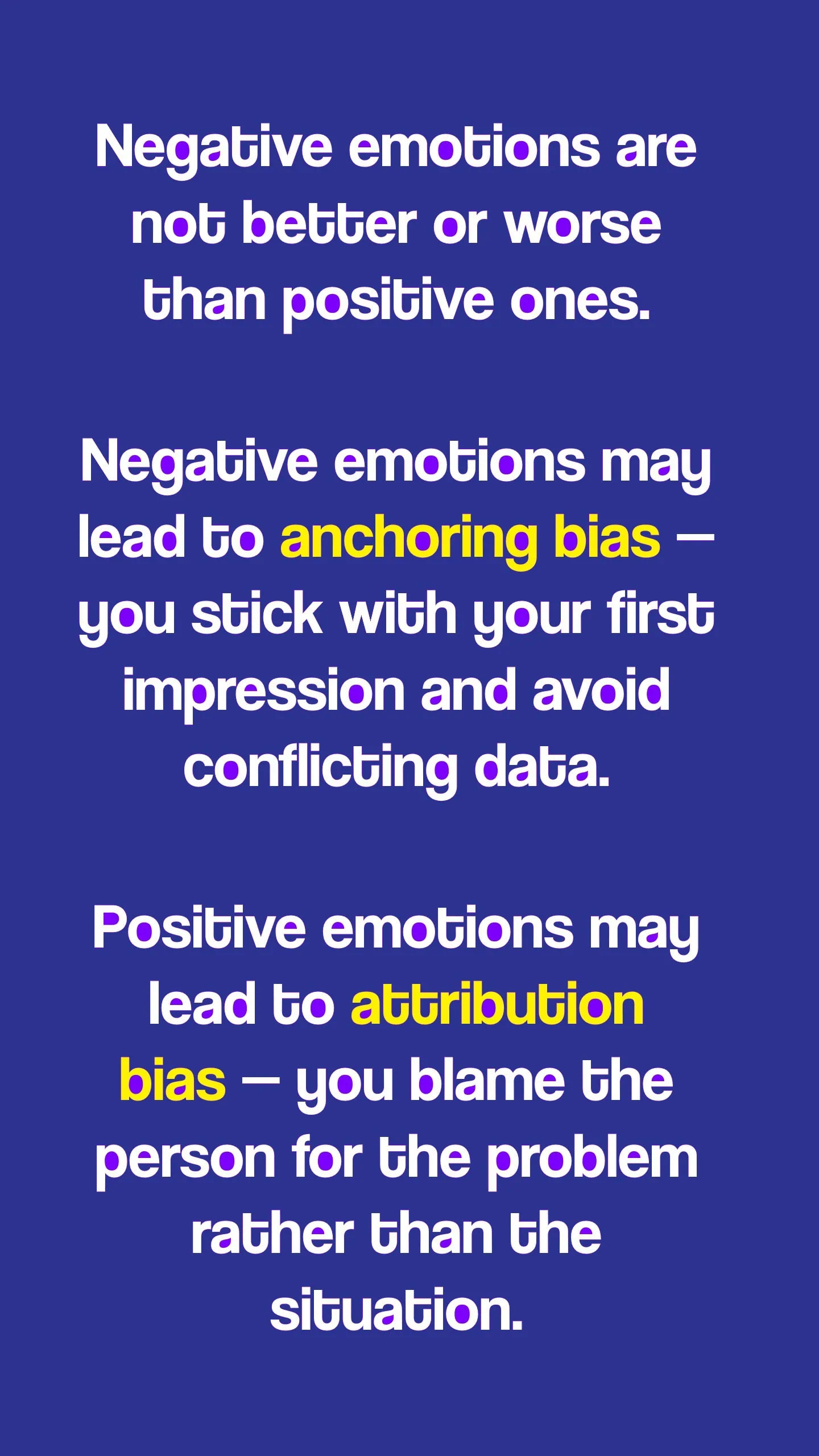
Should You Express Your Negative Emotions
Many people cannot properly express their negative emotions, like fear, grief, or stress, due to the social stigma around showing “unhappy” feelings. This often leads to unhealthy coping strategies like drinking or smoking, that only make things worse.
Two common but flawed pieces of advice that people face about emotions are:
- “Just Become Happier!” It’s a myth, and it doesn’t work. Ignoring negative emotions and focusing only on positivity can lead to “toxic positivity.” It makes people unrealistically expect happiness to be a switch to turn off emotional distress. This myth can make people feel guilty if they can’t keep their sunny side up.
- “Avoid Negative Feelings.” It’s dangerous advice that doesn’t work. Avoiding negative emotions can be harmful. Psychological research, from Freud to recent studies by Gross and John, shows that suppressing difficult emotions can lead to increased negative feelings, lower life satisfaction, reduced self-esteem, and less optimism.
We should express our negative emotions because:
- It allows for an emotional release, which can prevent the buildup of stress.
- It encourages us to embrace all aspects of our emotional experience, rather than just the positive ones.
Are Negative Emotions Really Negative?
To tell the truth, there is no such thing as a negative emotion. Emotions are not born good or bad.
Though negative emotions affect us both psychologically and biologically, they are natural and neutral. They point to some troublesome or not-so-happy events happening inside or outside.
They do what any other emotions do, how we let them affect us, and how we choose to express them.
Emotions exist to put us into motion.
• Emotion = E + motion
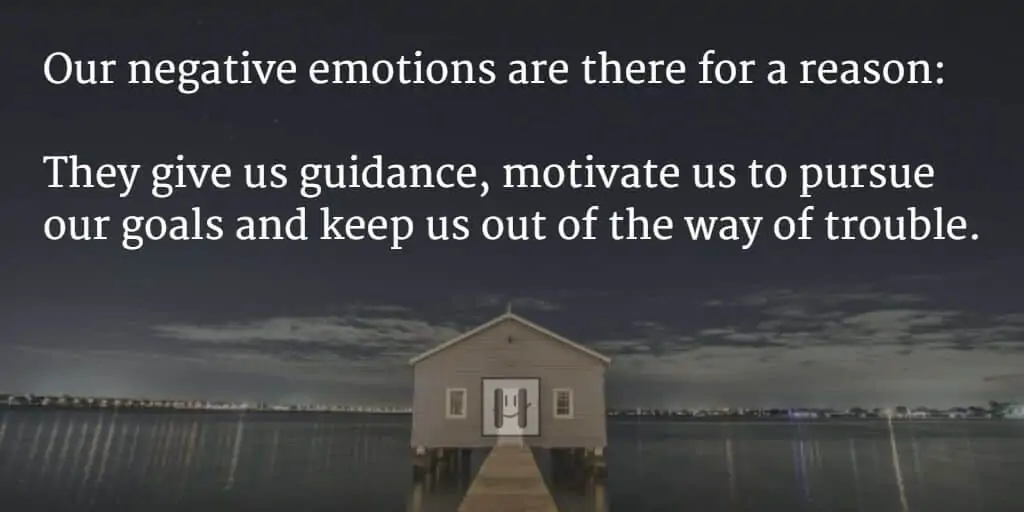
- Jealousy could be tipping us we’re wasting much of our time comparing ourselves with others.
- Anger might be pointing out that the wellbeing of ours or our close ones is under grave threat.
- Anxiety could be telling us we need a strong and far-reaching change in our behavior.
- Fear in our mind could be letting us know we need to move to a place of greater safety.
- Frustration or resentment might be asking us to change our stance in a relationship.
Emotions are a process, a particular kind of automatic appraisal influenced by our evolutionary and personal past, in which we sense that something important to our welfare is occurring, and a set of psychological changes and emotional behaviors begins to deal with the situation.
— Paul Ekman, PhD, expert on micro-expressions
Final Words
Taking the good and the bad together can be good for your mental well-being.
Researchers from Olin University found that an ability to feel happiness alongside sadness (Mixed Emotional Experience) in psychotherapy suggests improvements in psychological well-being.
Here are 3 takeaways:
- Negative Emotions Are Visitors: Negative emotions are not threats, but messengers. Listen to them, learn, and release them.
- Accept Them Without Judgment: Recognize and accept your negative emotions without judging them or criticizing yourself. With practice, this becomes intuitive.
- See The Lesson For Personal Growth: Embracing uneasy emotions helps self-discovery and resilience, guiding you toward a more authentic life.
• • •
√ Also Read: 20 science-backed activities and raise your happiness.
√ Please spread the word if you found this helpful.
• Our Story!
